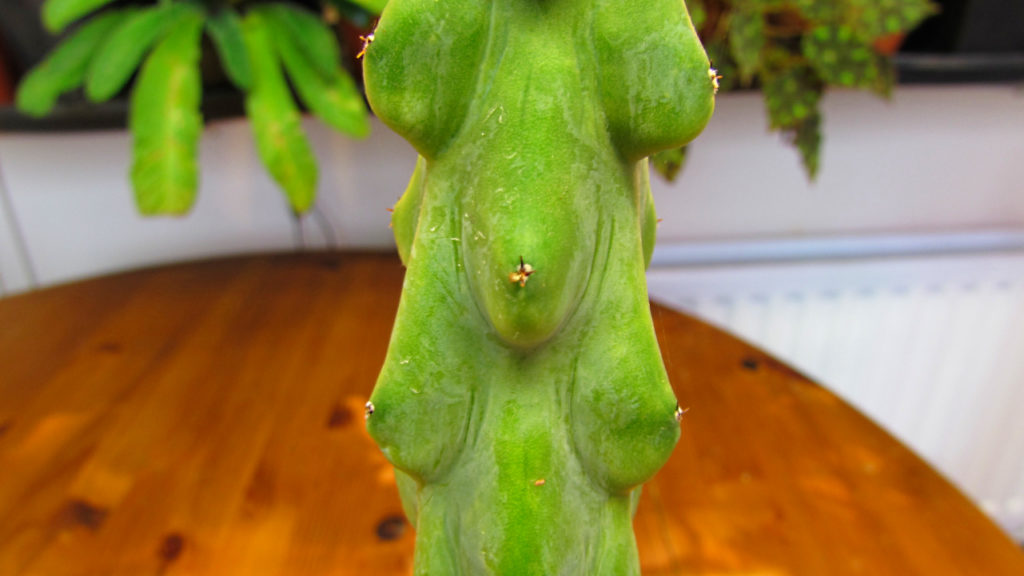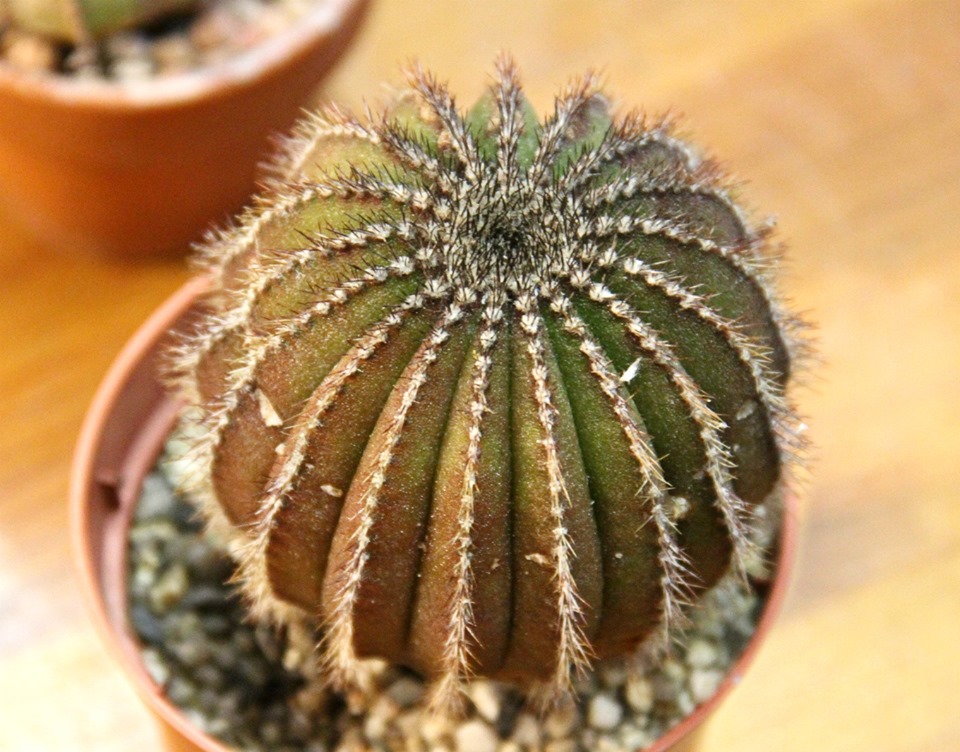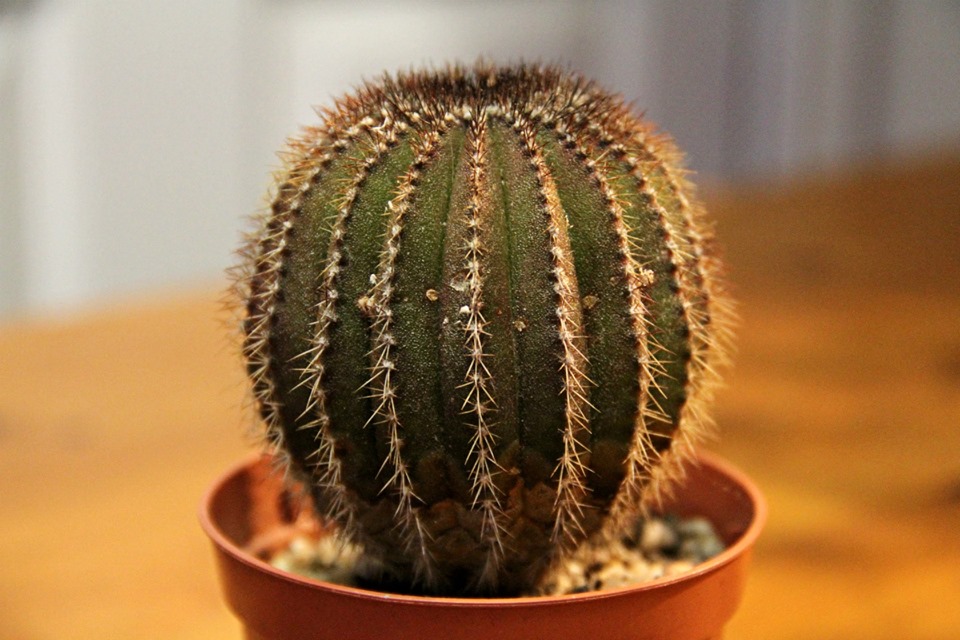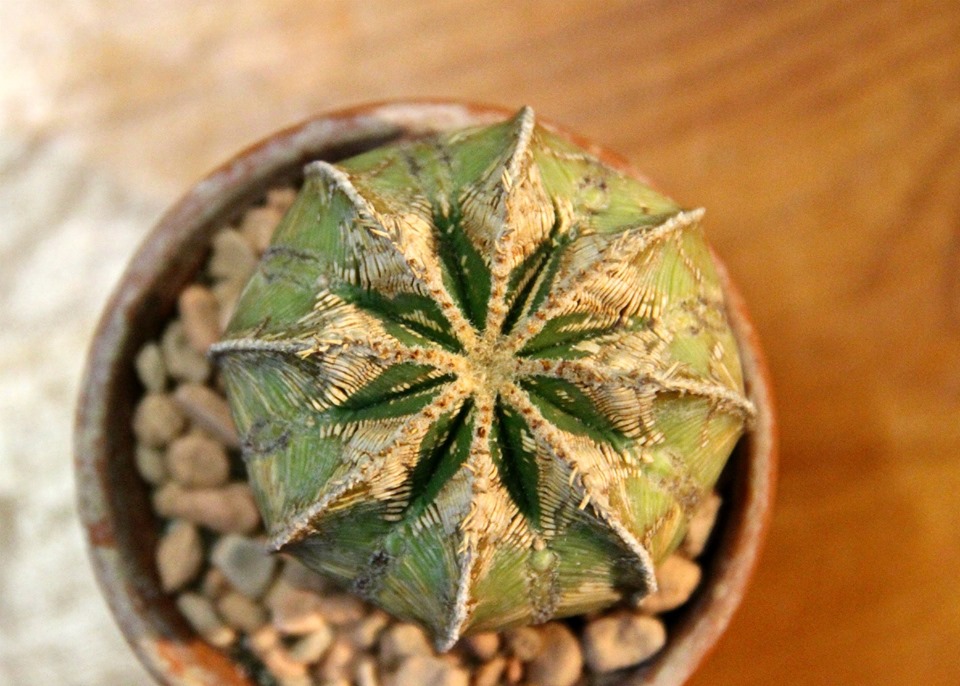Hi Guys 😀 In this Cactus care Blog I am talking about the very unusual and very wacky and yes a little bit naughty of a cactus called Myrtillocactus geometrizans var. ‘Fukurokuryuzinboku’ also known as ‘The Booby Cactus’
I have made a special How To Care for video on Myrtillocactus geometrizans var. ‘Fukurokuryuzinboku‘ also known as ‘The Booby Cactus’ on my You Tube Channel called Desert Plants of Avalon and I have linked the care video at the end of this Blog 😀

ABOUT :
Myrtillocactus geometrizans Fukurokuryuzinboku is a monstrose cultivar of the more commonly seen Myrtillocactus geometrizans, but this Cactus has more unusual shaped ribs along with areoles that resemble nipples making this cactus appear like it has little breasts in appearance, this is why this cactus is often nicknamed as ‘The Booby Cactus’ or ‘Titty Cactus’.
Myrtillocactus geometrizans Fukurokuryuzinboku is a rare plant to find for sale and is only available from specialist cactus nurseries and online cactus nurseries but is now becoming more popular to grow in cultivation, it is definitely one of the more expensive cactus plants to buy.
It is a Japanese cultivar that can grow up to 4.5 metres high ( 178 inches ) and 10 cm wide in diameter ( 4 inches ).
LIGHT :
This cactus definitely like a nice sunny spot, however when these plants are still young ( less than 3 inches in height ) or if taken as cuttings they are best placed in a less sunnier position, however when cuttings have fully rooted and the plant is taller than 3 inches in height they love to be placed in a sunny position as long as ventilation can be provided. If grown on a very sunny south facing window in the middle of summer then a shade cloth may be placed over the window to allow indirect sunshine onto the plant this will prevent scorch or yellowing of the stem.
SOIL :
A very well draining cactus soil is an absolute must for these cacti as soil that stays wet for too long will encourage rot, a good quality well draining cactus and succulent soil mix is to be used and not any other type of houseplant soil. I like to make my own cactus soil up for these cacti and use a mix of 3 equal parts of Loam, Horticultural sharp sand, and Grit. Here is a video I have made for my You Tube Channel called Desert Plants of Avalon on How I make my own cactus soil and you can watch this video below:
WATERING :
From Spring until mid Fall / Autumn these cacti love to be watered very regularly always allowing the soil in their pots to fully dry out first before watering them again, this is a better guide I like to give to people because when it comes to watering all cacti, one size does not fit all haha, as it can depend on many different factors for example the temperature, the climate etc, but as a good rule of thumb during their active growing period of Spring until mid Fall I recommend to water every time the soil in their pots has fully dried out.
In Winter these cacti like to have a winter rest period and no water should be given from late Fall / Autumn until Spring. Its normal for these cacti to shrivel as they use up their water stores during winter and their little ‘breasts’ will start to shrivel haha ‘however if you are overwintering your cactus indoors in a heated room and notice that the cactus is looking a bit too shrivelled you can go ahead and water just enough to plump up the plant again, but avoid doing this if growing your cactus in a cooler environment e.g a greenhouse or polytunnel etc, due to the cooler temperatures and higher air humidity levels of a greenhouse or polytunnel or other outdoor structure, its better a few wrinkly ‘boobs’ than rotten ones haha, and your cactus will soon plump back up again in Spring when normal watering resumes.
Clean Rainwater is always best if you have access to it, but if not then let your tap water sit for 24 hours to help to dissipate some of the chemicals that are present in tap water.
FERTILISING :
From spring and Summer feed these cacti once every 3 weeks with a good quality cactus and succulent fertiliser. Do not feed at all in Winter when these plants are resting.
TEMPERATURE :
Myrtillocactus geometrizans Fukurokuryuzinboku can not take frost and in Winter this cactus must be kept above 10 Celsius / 50 Fahrenheit, many growers would recommend that they can take lower than this if kept totally dry over winter but personally I would not recommend it as Myrtillocactus has a tendency to scar and scab and at the worst case rot in low temperatures during the Winter months when they are dormant, especially in my climate in Ireland and the UK where the air humidity is very high outdoors in winter, if you live in a more arid winter environment and country then its possible these plants can take lower temps in Winter but avoid frost at all costs.
During the Spring and Summer these cacti can take very high temperatures as long as plenty of ventilation can be given. If growing behind glass, e.g in a sunny window or greenhouse or conservatory, sun room etc, then windows must be open or and a fan / doors etc for ventilation during very hot and sunny days.

RE POTTING :
Its best to re pot these cacti during their active growing period in Spring and Summer and only when the plant has outgrown its pot, as with all cacti its far better to under pot rather than over pot because too much soil around their roots can stay damp for too long and may encourage the chances of root rot.
FLOWERING :
Myrtillocactus geometrizans Fukurokuryuzinboku will bloom when mature from about 60 cm tall in height ( 24 inches ) The flowers form in Spring and are small white flowers.
PROPAGATION :
Propagation of Myrtillocactus geometrizans Fukurokuryuzinboku is from cuttings taken in Spring and Summer. Cuttings need to fully dry ( callus ) over for a couple of weeks or more until a hard white callus has formed at the base of the cut before planting up as cuttings. Cuttings of these cacti need very warm weather above 18 Celsius / 65 Fahrenheit to root for the best success, additional heat with a heat mat can help with rooting these cuttings if your Summers are cool and damp like mine in Ireland and UK.
Seed propagation of Myrtillocactus geometrizans Fukurokuryuzinbokus is not recommend, this is because this cactus is a monstrose variety of the original Myrtillocactus geometrizans and any seeds germinated will grow as normal Myrtillocactus geometrizans cactus plants and will not grow with the little ‘breasts’.
I have made a video for my You Tube Channel called Desert Plants of Avalon on How to care for Myrtillocactus geometrizans Fukurokuryuzinboku aka The Booby Cactus and you can watch this video below :
I hope you enjoyed reading and learning lots about this very bizarre and wacky cactus.
Check out my Cacti and Succulent You Tube Channel called Desert Plants of Avalon for lots more tips and tricks on many different types of cacti and succulents and also for lots more info on how you can care for your Cacti and Succulents.
Thanks so much for reading and sending you all lots of HAPPY GROWING.






